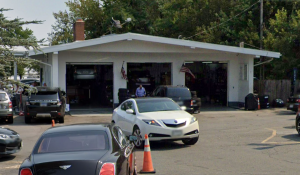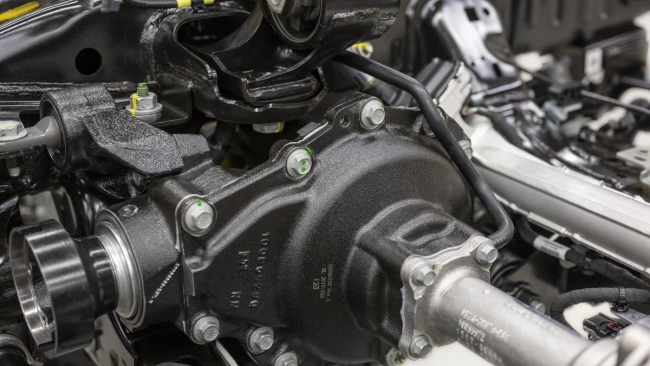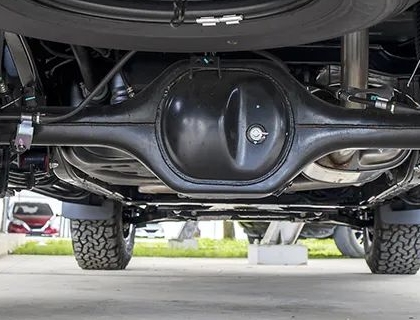


Symptoms of a bad differential
Here’s what to look out for.
1. Noises
Often described as a whining noise coming from the rear of the vehicle (front with front wheel drive vehicles) can be a sign of a failing differential. You may also notice a clunking or a clicking sound when you’re on the road, turning, or accelerating.
You might notice them more when you accelerate, slow down, or turn a corner. Howling and humming sounds can also indicate problems with your differential’s components, such as worn-out bearings in the axle or damage to the drive pinion.
2. Overheating
Driving your car at high speeds for a long time, hauling or towing heavy objects, such as an RV or trailer, can put extra pressure on your differential, causing it to overheat and parts of the differential to break down.
The same issue can happen if you let your car wheels spin out a lot, causing damage to the differential.
3. Vibration
If you feel a vibration that gets more intense as you accelerate, have your differential inspected as soon as possible. Even if it’s not the differential causing the vibration, this is a symptom you should not ignore.
4. Handling/steering problems
You might notice problems or difficulty handling the wheel of your vehicle, especially when cornering. If your vehicle is hard to control while turning or pulls to one side, it could be a symptom of a failing differential.
5. Gear grinding
Grinding sounds may also mean that the internal gears within the differential system are wearing out. It is most likely to happen when accelerating or turning a corner.
6. Tire damage
The lack of control a failing differential has over your vehicle’s tires will eventually show in the tires themselves. Look for excessive tire wear, uneven treads, or exceptional wear along the tread edges.
7. Oil leaks
Your differential has gear oil to keep all the components working smoothly together. It also maintains temperature when you’re out on the road. You may notice fluid pooling under the axles if it is leaking.
8. Burning smell
A burning smell from the gearbox indicates that your differential oil is dirty or contaminated, and so it’s not keeping all the components running smoothly. This then causes the differential to overheat, resulting in the distinctive burnt oil smell.
Make an appointment
Our certified drivetrain specialists are here for you. If you are experiencing any of these symptoms bring your vehicle to us for an inspection and diagnosis before the issue becomes a major one.
What is a differential?
On a turn, the outside wheel travels farther and faster than the inside one. The differential is a set of gears that transmits engine power to the wheels, while allowing them to turn at different speeds on turns.
What is a front differential?
With front-wheel-drive (FWD), the differential is alongside the transmission inside a housing, and the unit is called a transaxle.
What is a rear differential?
With rear-wheel-drive (RWD), the differential is between the rear wheels, connected to the transmission by a driveshaft. All-wheel-drive (AWD) and four-wheel-drive (4WD) vehicles add a centre differential or transfer case to distribute power front and rear.

Some hybrid vehicles have “electronic” AWD. These use electric motors to power the rear wheels, and turn them faster or slower as needed on turns.
What is an open differential?
The open differential allows the wheels to turn independently at different speeds. Its main drawback is that if one wheel doesn’t have traction, such as if it hits ice, it still gets lots of power. It spins helplessly, and you go nowhere.
To help with traction loss while you’re driving, all new vehicles must be equipped with traction and electronic stability control. These use sensors from the anti-lock brakes to determine if one wheel is turning faster. It then reduces engine power, or brakes the spinning wheel, or both, to get things under control.
Sometimes you want a wheel to spin, such as when trying to get out of deep snow, so traction control can be temporarily disabled with a button on the dash.
What is a limited slip differential?
A limited-slip differential is a type of differential that lets two output shafts rotate at varying speeds but with a maximum difference between them. This helps with traction, especially in slippery conditions.
Some vehicles, primarily performance models, use a limited-slip differential instead of an open one. If one wheel loses traction, power goes to the other wheel. This reduces wheel spin, and on a higher-powered FWD vehicle, helps prevent torque-steer — the tendency for a front-driver to pull from side to side when you step on the throttle.
Limited-slips all serve the same purpose, but exactly how they do it depends on what type they are. A mechanical-clutch differential has clutch plates alongside the gears, and when needed, pressure rings press on the plates to provide resistance. An active differential system works the same way, but uses a computer to monitor the driving conditions and activate the differential’s clutch.